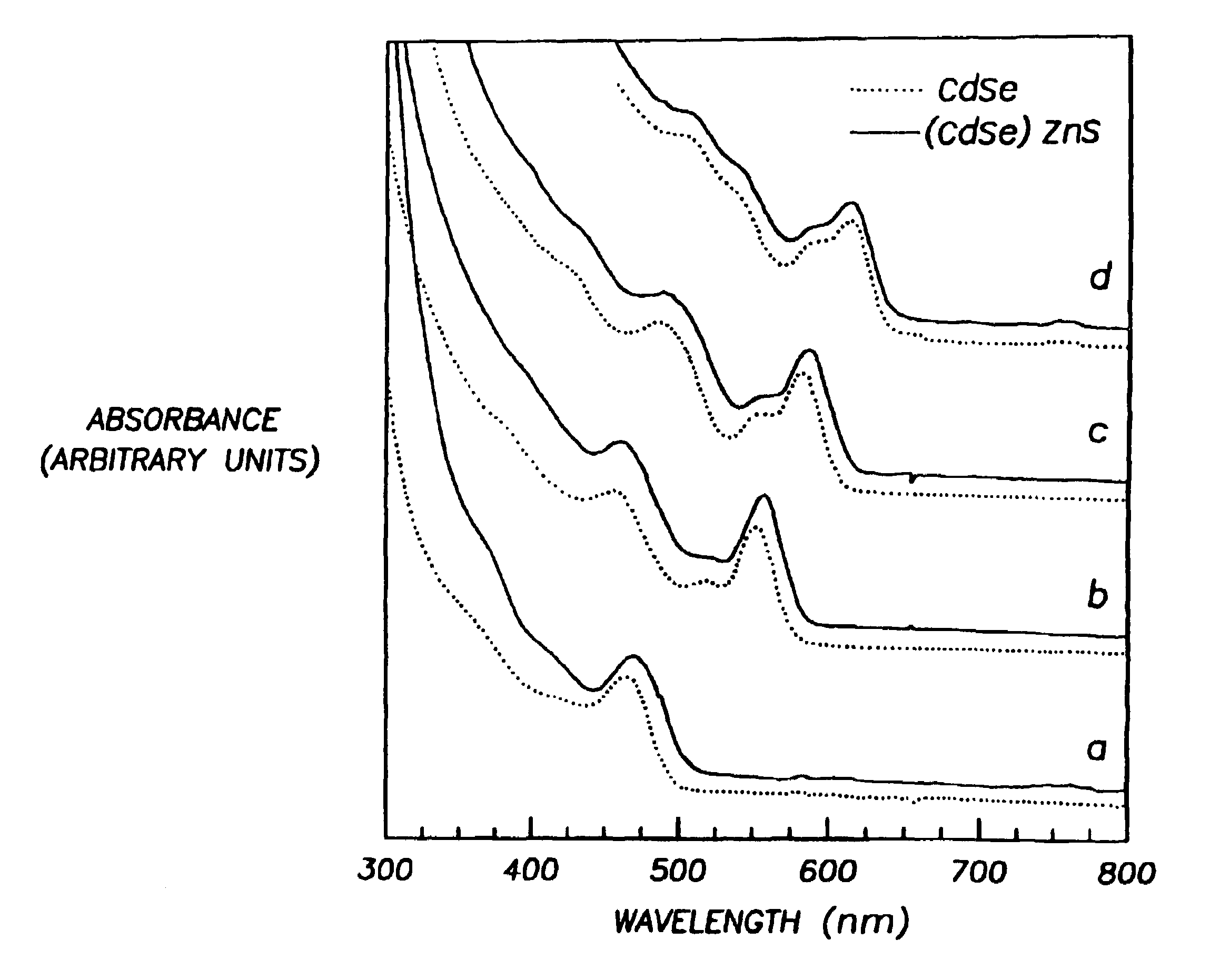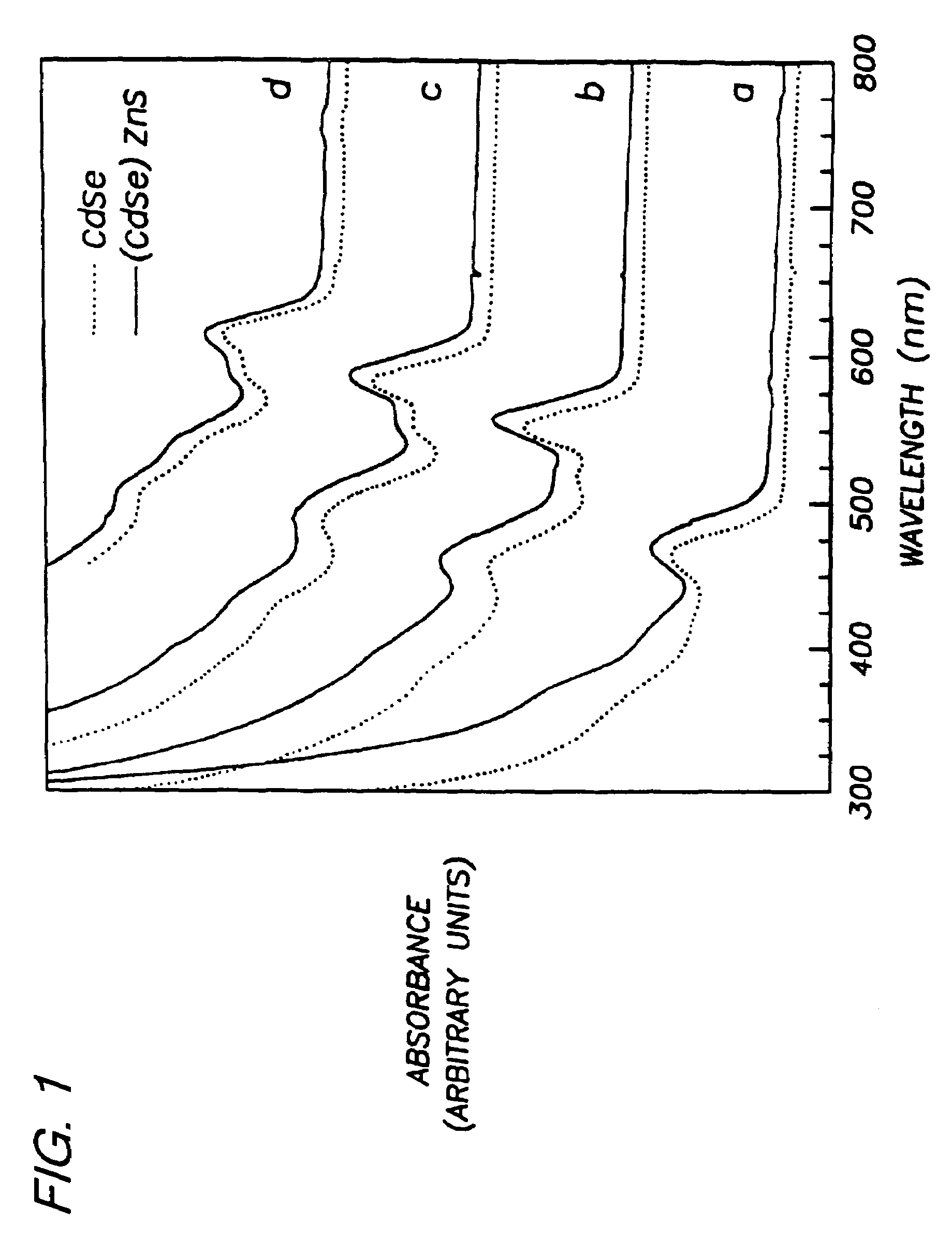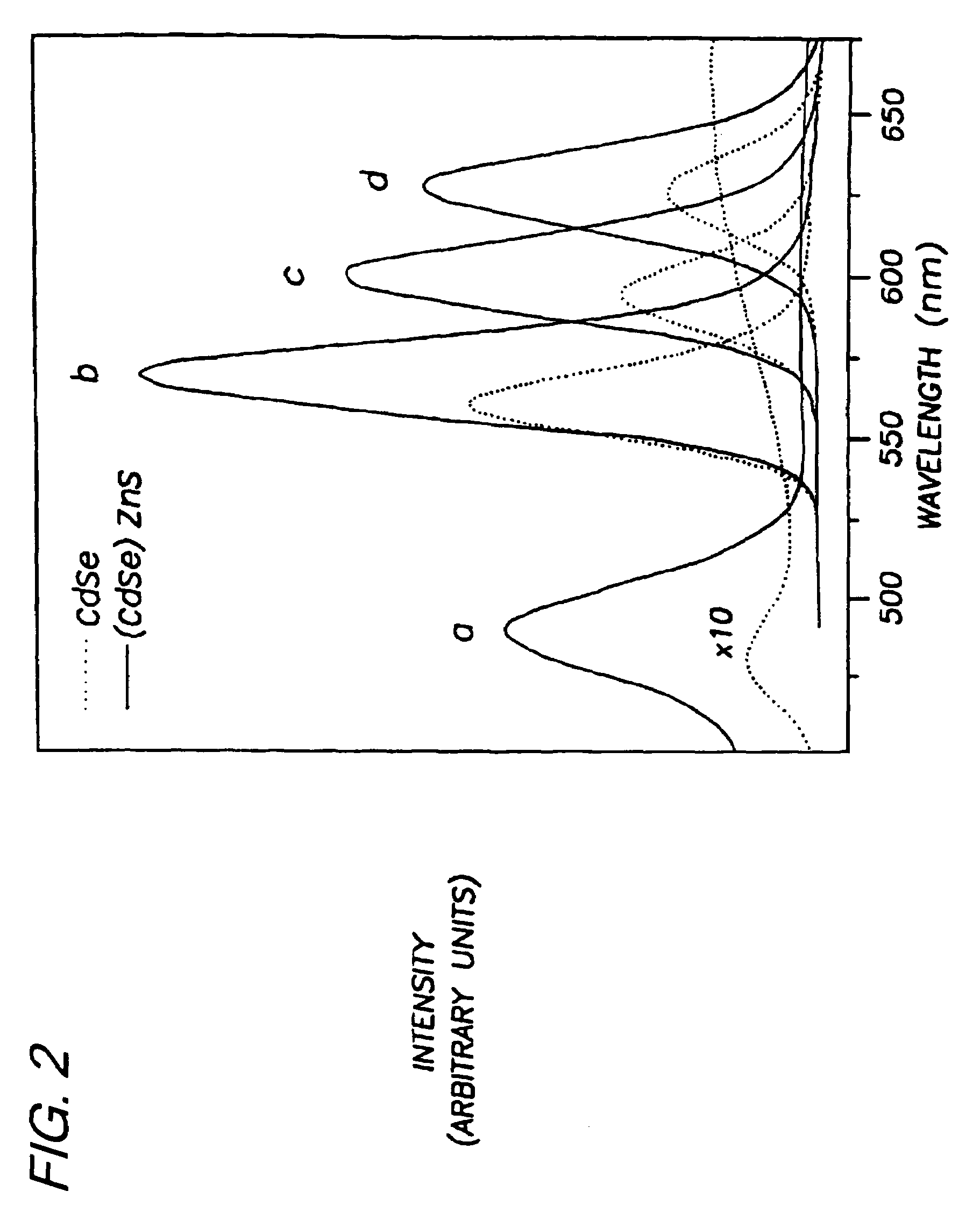Highly luminescent color-selective nanocrystalline materials
a nanocrystalline material, color-selective technology, applied in the direction of organic compounds of the group 5/15, natural mineral layered products, cellulosic plastic layered products, etc., can solve the problems of poor luminescence properties of crystallites, low quantum efficiency of dots, and inability to commercially use light-emitting applications, etc., to promote organic compound coordination
- Summary
- Abstract
- Description
- Claims
- Application Information
AI Technical Summary
Benefits of technology
Problems solved by technology
Method used
Image
Examples
example 1
[0046]Preparation of CdSe. Trioctylphosphine oxide (TOPO, 90% pure) and trioctylphosphine (TOP, 95% pure) were obtained from Strem and Fluka, respectively. Dimethyl cadmium (CdMe2) and diethyl zinc (ZnEt2) were purchased from Alfa and Fluka, respectively, and both materials were filtered separately through a 0.2 μm filter in an inert atmosphere box. Trioctylphosphine selenide was prepare by dissolving 0.1 mols of Se shot in 100 ml of TOP thus producing a 1 M solution of TOPSe. Hexamethyl(disilathiane) (TMS2 S) was used as purchased from Aldrich. HPLC grade n-hexane, methanol, pyridine and n-butanol were purchased from EM Sciences.
[0047]The typical preparation of TOP / TOPO capped CdSe nanocrystallites follows. TOPO (30 g) was placed in a flask and dried under vacuum (˜1 Torr) at 180° C. for 1 hour. The flask was then filled with nitrogen and heated to 350° C. In an inert atmosphere drybox the following injection solution was prepared: CdMe2 (200 microliters, 2.78 mol), 1 M TOPSe solut...
example 2
[0052]Preparation of CdSe. A second route to the production of CdSe core replaces the phosphine chalcogenide precursors in Example 1 with (TMS)2Se. The smallest (˜12 Å) CdSe species are produced under milder conditions with injection and growth carried out at ˜100° C. The product was further treated as described in Example 1.
example 3
[0053]Preparation of (CdSe)ZnS. Nearly monodisperse CdSe quantum dots ranging from 23 Å to 55 Å in diameter were synthesized and purified via size-selective precipitation as described in Example 1.
[0054]A flask containing 5 g of TOPO was heated to 190° C. under vacuum for several hours then cooled to 60° C. after which 0.5 mL trioctylphosphine (TOP) was added.
[0055]Roughly 0.1–0.4 μmols of CdSe dots dispersed in hexane were transferred into the reaction vessel via syringe and the solvent was pumped off.
[0056]Diethyl zinc (ZnEt2) and hexamethyldisilathiane ((TMS)2S) were used as the Zn and S precursors, respectively. The amounts of Zn and S precursors needed to grow a ZnS shell of desired thickness for each CdSe sample were determined as follows: First, the average radius of the CdSe dots was estimated from TEM or SAXS measurements. Next, the ratio of ZnS to CdSe necessary to form a shell of desired thickness was calculated based on the ratio of the shell volume to that of the core a...
PUM
| Property | Measurement | Unit |
|---|---|---|
| quantum yields | aaaaa | aaaaa |
| quantum efficiency | aaaaa | aaaaa |
| full width | aaaaa | aaaaa |
Abstract
Description
Claims
Application Information
 Login to View More
Login to View More - R&D
- Intellectual Property
- Life Sciences
- Materials
- Tech Scout
- Unparalleled Data Quality
- Higher Quality Content
- 60% Fewer Hallucinations
Browse by: Latest US Patents, China's latest patents, Technical Efficacy Thesaurus, Application Domain, Technology Topic, Popular Technical Reports.
© 2025 PatSnap. All rights reserved.Legal|Privacy policy|Modern Slavery Act Transparency Statement|Sitemap|About US| Contact US: help@patsnap.com



